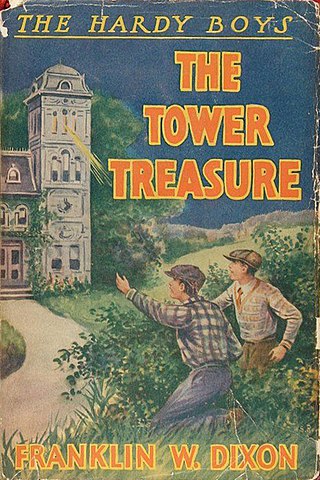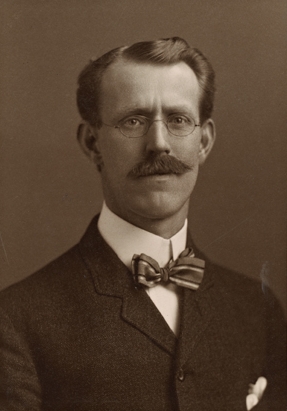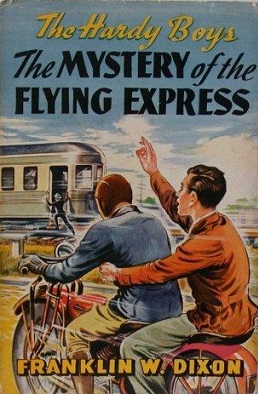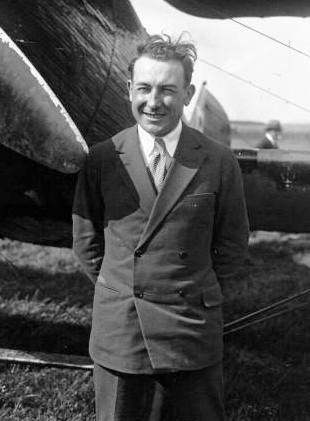
Mildred Augustine Wirt Benson was an American journalist and writer of children's books. She wrote some of the earliest Nancy Drew mysteries and created the detective's adventurous personality. Benson wrote under the Stratemeyer Syndicate pen name, Carolyn Keene, from 1929 to 1947 and contributed to 23 of the first 30 Nancy Drew mysteries, which were bestsellers.
The Stratemeyer Syndicate was a publishing company that produced a number of mystery book series for children, including Nancy Drew, The Hardy Boys, the various Tom Swift series, the Bobbsey Twins, the Rover Boys, and others. They published and contracted the many pseudonymous authors doing the writing of the series from 1899 through 1987, when the syndicate partners sold the company to Simon & Schuster.

The Hardy Boys, brothers Frank and Joe Hardy, are fictional characters who appear in several mystery series for children and teens. The series revolves around teenagers who are amateur sleuths, solving cases that stumped their adult counterparts. The characters were created by American writer Edward Stratemeyer, the founder of book packaging firm Stratemeyer Syndicate. The books were written by several ghostwriters, most notably Leslie McFarlane, under the collective pseudonym Franklin W. Dixon.

Franklin W. Dixon is the pen name used by a variety of different authors who were part of a team that wrote The Hardy Boys novels for the Stratemeyer Syndicate. Dixon was also the writer attributed for the Ted Scott Flying Stories series, published by Grosset & Dunlap.

Howard Roger Garis was an American author, best known for a series of books that featured the character of Uncle Wiggily Longears, an engaging elderly rabbit. Many of his books were illustrated by Lansing Campbell. Garis and his wife, Lilian Garis, were possibly the most prolific children's authors of the early 20th century.
Roy Rockwood was a house pseudonym used by Edward Stratemeyer and the Stratemeyer Syndicate for boy's adventure books. The name is most well-remembered for the Bomba the Jungle Boy series.

Edward L. Stratemeyer was an American publisher, writer of children's fiction, and founder of the Stratemeyer Syndicate. He was one of the most prolific writers in the world, producing in excess of 1,300 books himself, selling in excess of 500 million copies. He also created many well-known fictional book series for juveniles, including The Rover Boys, The Bobbsey Twins, Tom Swift, The Hardy Boys, and Nancy Drew series, many of which sold millions of copies and remain in publication. On Stratemeyer's legacy, Fortune wrote: "As oil had its Rockefeller, literature had its Stratemeyer."
Tailspin Tommy was an aviation-adventure comic strip about a youthful pilot, "Tailspin" Tommy Tomkins. Originally illustrated by Hal Forrest and initially distributed by John Neville Wheeler's Bell Syndicate and then by United Feature Syndicate, the strip had a 14-year run from May 21, 1928 to March 15, 1942.
Charles Leslie McFarlane was a Canadian journalist, novelist, screenwriter, and filmmaker, who is most famous for ghostwriting many of the early books in the very successful Hardy Boys series, using the pseudonym Franklin W. Dixon.
Radio Boys was the title of three series of juvenile fiction books published by rival companies in the United States in the 1920s:

Tom Tyler was an American actor known for his leading roles in low-budget Western films in the silent and sound eras, and for his portrayal of superhero Captain Marvel in the 1941 serial film The Adventures of Captain Marvel. Tyler also played Kharis in 1940's The Mummy's Hand, a popular Universal Studios monster film.

The Mystery of the Flying Express is Volume 20 in the original The Hardy Boys Mystery Stories published by Grosset & Dunlap.

Robert William Armstrong was an American film and television actor remembered for his role as Carl Denham in the 1933 version of King Kong by RKO Pictures. He delivered the film's famous final line: "It wasn't the airplanes. It was beauty killed the beast."

Don Sturdy is a fictional character in the Don Sturdy series of 15 American children's adventure novels published between 1925 and 1935 by Grosset & Dunlap. The books were written by Victor Appleton, a house name used by the Stratemeyer Syndicate. They were illustrated by Walter S. Rogers. The actual writer for all but one of the books was John W. Duffield. The remaining book, Don Sturdy In The Land Of Giants, or, Captives Of the Savage Patagonians (1930), was written by Howard Roger Garis.

Dieudonné Costes was a French fighter ace during World War I, and later distance records-breaking aviator.
The Betty Gordon books were an early Stratemeyer Syndicate series, published under the pseudonym Alice B. Emerson.

Walter Stanton Rogers was one of the primary illustrators used by the Stratemeyer Syndicate for its children's book series from the 1910s-1930s. For many collectors, Rogers, "with his many wonderful full-color dust jackets," was "a benchmark for a successful series-book illustrator."
Harry C. Neumann of Chicago, Illinois, was a Hollywood cinematographer whose career spanned over forty years, including work on some 350 productions in a wide variety of genres, with much of his work being in Westerns, and gangster films.

Dave Dashaway was a series of juvenile aviation novels written for the Stratemeyer Syndicate by Weldon J. Cobb, using the pseudonym of Roy Rockwood. The series was published by Cupples & Leon from 1913 to 1915. The hardback books had a picture printed onto the front cover, plus a black and white frontispiece illustration.
Lewis Edwin Theiss was a freelance writer for national magazines, Professor of Journalism at Bucknell University, and an author of adventure books for boys.













